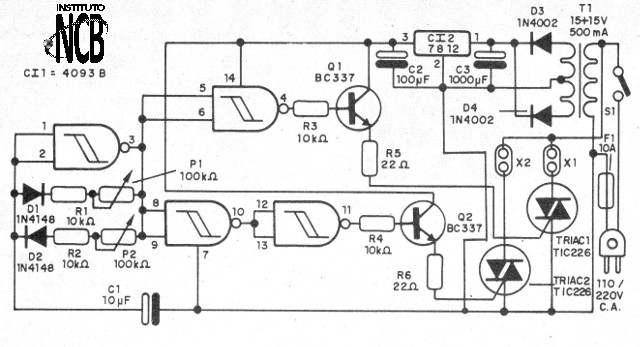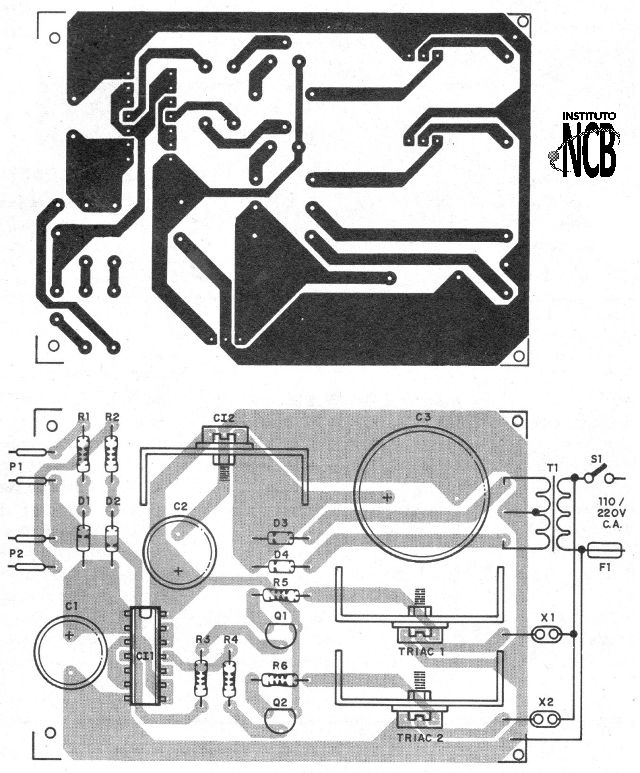Although incandescent bulbs are no longer used in lighting, there are still applications such as decoration, ovens and other places in LED bulbs that can be economical. The circuit we describe causes two sets of high power bulbs in total to blink alternately, with the lighting time of each independently controlled.
We can use this circuit in musical ensembles, theater, nightclubs and shop windows. The base of the circuit is an integrated 4093 that functions as an oscillator with the active duty cycle.
We use three ports to get signals with opposite phases that are used to trigger two Triacs alternately.
In Figure 1 we have the complete diagram of the effect.

In figure 2 we have the assembly on a printed circuit board, noting that the power supply is included and that the power components must have heat sinks.

On assembly, observe the position of integrated circuits, transistors, triacs and the polarity of diodes and electrolytic capacitors. The resistors are 1/8 W with any tolerance, and the electrolytes must have 25 V or more working voltage.
Triacs must have a B or D suffix if the network is 110 V and suffix D if the network is 220 V. Caution must be taken in assembly, and insulation of live parts, because the circuit works connected to the power grid.
CI-1 - 4093 - integrated circuit
CI-2 - 7812 - integrated circuit
Q1, Q2 - BC337 - general purpose NPN transistors
Triac 1, Triac 2 - TIC226 B or D - see text
D1. D2 - 1N4148 - general purpose diodes
D3, D4 - 1N4002 or 1N4004 - rectifier diodes
R1 to R4 - 10 k ohm - resistors - brown, black, orange
R5, R6 - 22 ohm - resistors - red, red, black
C1 - 10 uF - electrolytic capacitor
C2 - 100 uF - electrolytic capacitor
C3 - 1000 uF - electrolytic capacitor
T1 - 12 + 12 V transformer with 500 mA or more
F1 - fuse according to the number of lamps
S1 – On/Off switch
X1, X2 - series of incandescent lamps - up to 400 W each in 110 V
Several:
Printed circuit board, mounting box, high current power cord (according to the lamps), heat sinks, wires, solder, etc.




